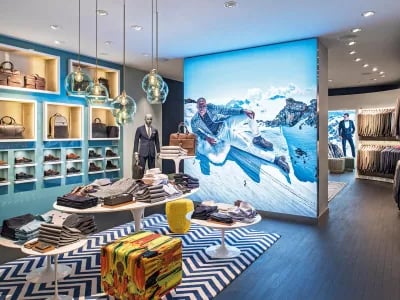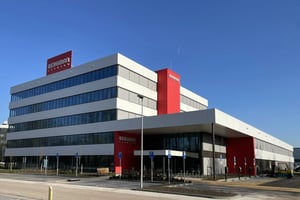In recent years, many online retailers have made the choice to open physical stores. Two examples here in the Netherlands are Coolblue and Fietsenwinkel.nl. Manhattan Associates, a tech leader in supply chain and omnichannel commerce, says that according to their research this is an ongoing trend. They expect that within two generations, the combination of ‘clicks & bricks’ will be the new normal. In marketing, there is already a buzzword for it: ROPO (research online, purchase offline). Online and offline purchases go hand-in-hand. Suitsupply is a perfect example: the company reinforces its bond with the customer with stores on three continents and a worldwide online shop.
Pure online purchases have had their day; so say ABN-AMRO and CBW Mitex in a recent sector report. Today’s consumer doesn’t want to be tied down to a single channel, but expects to be able to take advantage of both the convenience of an online store (buy what you want, when and where it suits you, wherever you are, whenever you feel like it) and a physical store (where you can try the product, be advised by sales personnel, and take the product home right away).
In a recent interview with het Financieele Dagblad, Pieter Zwart, CEO of Coolblue, said: “We need physical stores because the customer wants to taste the coffee that comes out of their new coffee machine, wants to hear the sound that comes out of the speaker, wants to feel how the headphones feel when you’re wearing them. And for some customers it’s important to take the product home right away. Or they’re looking for the service or advice that the product specialists in the store can give.” Bastiaan Hagenouw of Fietsenwinkel.nl knows this too, which is why he says, “With a bicycle, people really want to smell it, to touch it.” That’s why his online store Fietsenwinkel.nl now operates 50 physical stores in the Netherlands and Belgium in parallel with their strong online presence, so customers can come in for a test drive.
But the increasingly demanding consumer is not the only reason why more and more online retailers are opening physical stores. It turns out that a physical store has a positive impact on online sales as well. “When we open a physical store, we sell more in that city. Yes, online, too,” says Zwart. “How much more? Well, definitely enough to pay the rent on the shop. It gives customers extra confidence.”
Online and offline reinforce each other
Zwart’s observation is confirmed by recent research conducted by Uriel Ballast of AdCurve, who used data analysis to study the differences in order density (number of orders per location) between online retailers with and without physical stores. The conclusion was clear: online sales are higher in regions where the retailer also has physical stores. That’s why Ballast thinks that within one or two generations, the “pure players” and physical stores are going to simply melt together into a single concept.
Suitsupply: available online and offline from day one
One early true believer in the combination of physical and online is Suitsupply’s CEO Fokke de Jong. Now with 91 stores in 73 cities (25 in the Netherlands), the chain is already a force to be reckoned with in the bricks-and-mortar segment. But at the same time, the online channel continues to become a bigger and bigger part of Suitsupply. Witness, for example, the recent appointment of former Coolblue exec Nick Lenten as Suitsupply’s new chief customer officer.
De Jong says Suitsupply is starting to become “something of a tech company... The people who design our collections and the people who write code are working side-by-side to strengthen our online proposition.” The Suitsupply founder doesn’t believe in virtual clothing stores – he’s convinced that at the end of the day, customers really want to be helped personally – but he does believe in online tools that make the physical shopping part easier and more efficient. “Someone who likes a certain jacket, for example, we’re making it easier for them to find matching products. Doing it this way, online and offline can only reinforce each other.”
Advantages of synergy
Meanwhile, things on the American and Chinese markets are moving the same way, but on steroids. Last year, Amazon, the world’s biggest internet company, took over major supermarket chain Whole Foods and its 500 stores in one fell swoop. That move means that Amazon sees synergies in running an online department store and physical stores side-by-side.
Chinese giant Alibaba followed suit, taking a stake in a real-world supermarket chain of its own (Sun Art Retail Group, China’s second-largest) last year as well. The world’s third-largest internet retailer, JD.com, has long been an established real-world brand, with hundreds of stores in China. It’s important to note that Alibaba sees physical stores principally as an extra boost for its online activities. With the stores, Alibaba hopes to reach millions of new shoppers and crack the still relatively untapped market of the Chinese hinterland, reports European Supermarket Magazine. In the end, they think, everyone will ultimately be taking their physical purchasing online.
Want to know more about the synergy between clicks and bricks? Contact Bart Coopmans or Rutger Ruigrok.













